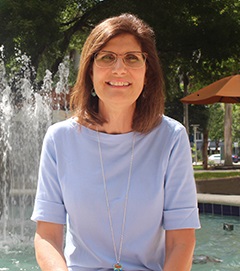Proper Sickle Cell Disease Care: Kids Aren’t Getting it

Despite the growing number of interventions for sickle cell disease (SCD), a disconcerting majority of children do not receive the necessary health surveillance to keep this inherited red blood cell disorder in check.
Two of the complications associated with SCD are strokes and infection.
A recently released report from the U.S. Centers for Disease Control and Prevention found less than half of children and teenagers had an annual transcranial Doppler ultrasound (TCD). This test can detect an increased risk for strokes. Furthermore, only 40% of kids 2 to 9 years old and about 50% of kids in the 10-to-16 age group were receiving hydroxyurea. This proven treatment helps reduce the acute pain associated with the condition.
Ofelia A. Alvarez, M.D., director of the Pediatric Sickle Cell Program at the University of Miami Health System, is not entirely surprised by these numbers.
“There is much education that we have to give to patients and providers. We try to impress on them that screening and treatment are essential. We are also looking at barriers to health care in my practice.”
Dr. Alvarez’s patients reflect the diversity of the South Florida population. About one-third are Haitian, and just under 10% are Hispanic.
Culturally appropriate outreach is key.
“We have to make sure to overcome language and economic barriers” to communicate effectively with these patients, she adds.
UHealth is the only sickle cell treatment center in Florida recognized by the National Alliance for Sickle Cell Centers (NASCC).
It is also one of only 11 adult sickle cell treatment centers and one of eight pediatric sickle cell treatment programs in the country recognized by the NASCC. The recognition points to the program’s pioneering efforts to treat its patients.
“Because we have been involved in major clinical trials, we can provide cutting-edge treatment to our patients,” Dr. Alvarez says.
The new CDC report, she adds, offers a view of TCD implementation and hydroxyurea use around the country since 2014. That’s when the National Heart, Lung, and Blood Institute issued recommendations to minimize the risk of stroke and other complications for kids with sickle cell disease. These recommendations included annual transcranial Doppler ultrasound screening and hydroxyurea treatment.
Without treatment or early detection, about 11% of kids with sickle cell anemia, the most severe form of SCD, go on to develop a symptomatic stroke by the time they turn 20, and some experts believe that number may actually be higher because of asymptomatic “silent strokes.”
With TCD screening, however, children who need it can be given transfusion therapy to lower their risk.
This is why screening and early intervention are so important. We can treat the abnormality only when we know about it.
Dr. Alvarez
As for the hydroxyurea, the percentage of children taking the treatment varied greatly between groups.
For instance, only 38% of children between 2 to 9 were on the medication, but as many as 53% of adolescents 10 to 16 years old reported usage. That number was higher for kids who had had a recent emergency department visit or hospitalization. At the University of Miami, 80% of children and young adults with sickle cell anemia are receiving hydroxyurea.
While hydroxyurea is no cure for SCD, it is a long-term treatment that has proven effective.
It makes red blood cells bigger, helping them stay rounder and more flexible, instead of the hard and sticky “sickle-shaped” red cells found in untreated SCD. The drug also increases a special kind of hemoglobin called hemoglobin F. By doing this, it decreases the rate of painful episodes suffered by patients as a result of their sickle-shaped blood cells getting stuck in small blood vessels, which can also cause other serious complications.
The CDC estimates that about 100,000 Americans have SCD, most of them Black or African-American.
But Hispanic Americans are also born with sickle cell. SCD occurs in 1 out of every 365 Black or African-American births and in 1 out of every 16,300 Hispanic-American births.
Those with the disease can live a normal life, but they must take precautions. Because even a common illness can be very dangerous, individuals with SCD must prevent infections. In addition, they should see a doctor, preferably a hematologist or sickle cell expert, every three months as children and at least once a year when older.
There have been several encouraging advances in the SCD field, Dr. Alvarez is quick to point out. Bone marrow transplantation is curative for patients with sickle cell anemia who qualify and have donors.
Gene therapy is being investigated as another curative option.
And deaths due to complications from SCD have been steadily dropping among young children, mainly due to newborn screening, penicillin to prevent infection, and the introduction in 2000 of a vaccine that protects against invasive pneumococcal disease, one of the leading causes of SCD-related deaths. In addition, the CDC report also pointed to some reassuring developments.
Though the numbers remain lower than ideal, TCD screening did increase from 2014 to 2019 — 27% for kids between the ages of 10 to 16 and 9% among children ages 2 to 9. Hydroxyurea use rose by 27% among younger children and 23% among children adolescents 10 to 16.
“We need to continue improving the care we provide as well as accessibility to that care,” Dr. Alvarez says. “And we must educate not just the community but also healthcare providers about the importance of screenings and timely treatment.”

Ana Veciana Suarez,
Columnist
Ana is a regular contributor to the University of Miami Health System. She is a renowned journalist and author who has worked at The Miami Herald, The Miami News, and The Palm Beach Post. Visit her website at anavecianasuarez.com or follow @AnaVeciana on Twitter.
Tags: children's health, kids health, pediatric care in Miami, sickle cell disease
